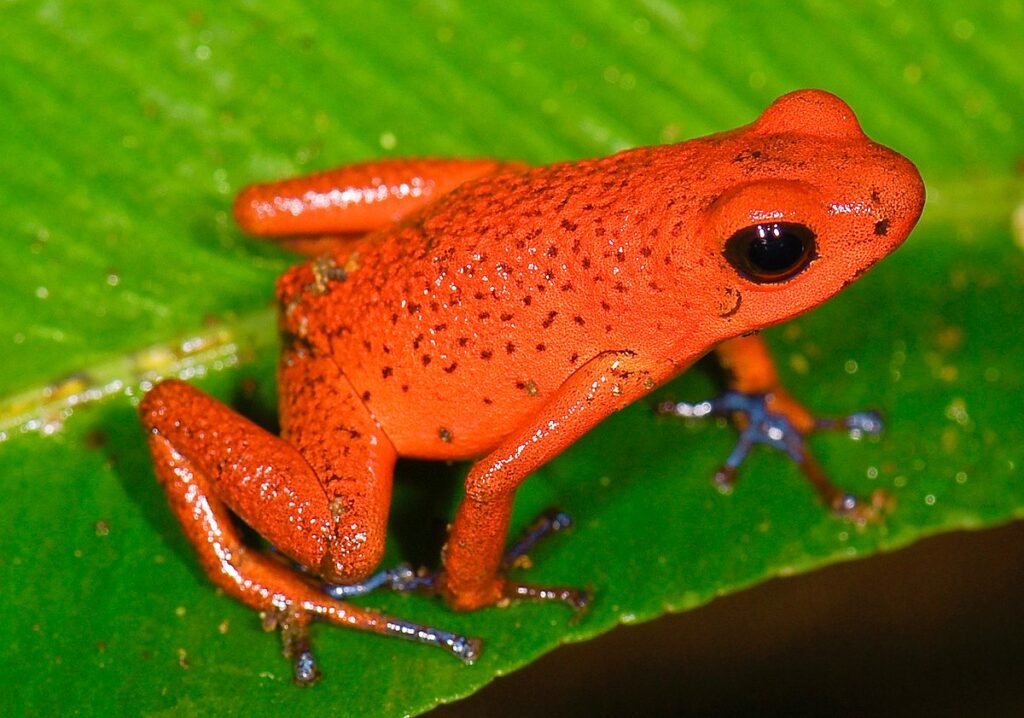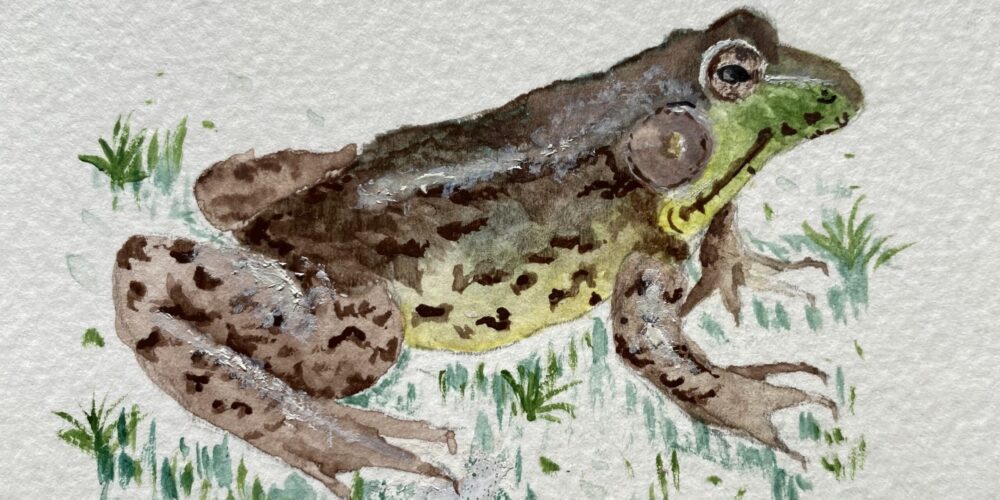By Ben Upton

Poison dart frogs are among the most colorful groups of species in the world, with body colors that encompass every shade of the rainbow, and strawberry poison frogs (Oophaga pumilio) are no exception. Typically, strawberry poison frog populations consist of a single color morph, meaning that all of the frogs that live in an area are the same color. But in some regions, like in the Bocas Del Toro region of Panama, there are populations of these colorful critters in which multiple color morphs live together and come in contact with one another. This occurrence is exactly what made ecologist and PhD Student Yusan Yang of the University of Pittsburgh so interested in these frogs.
Yusan, while not specifically a frog researcher by trade, is interested in these frogs because of their distinct variation in appearance. The differences in color among individuals in this species allow Yusan to study whether individuals select mates based on a preference for one color over another. Yusan considers herself a question driven scientist rather than a species driven scientist, and currently these poison frogs are the best critters available to help her try to find answers to her question. What is her question exactly? How does sexual selection drive evolution? In other words, Yusan wants to try and determine how mate choice in these frogs could influence long-term changes in the species.
One of the main questions addressed in Yusan’s work is this: In an environment where frogs of two distinctly different color morphs live together, how do females choose which males to mate with? When these frogs were studied in a lab setting, researchers found that frogs of a certain color morph preferred to mate with individuals of that same color morph. Furthermore, when the frogs were presented with mate choices that were all of the same color morph, they were more likely to choose the mate that had the shade most similar to their own. Why does this matter, you ask? Well, think about it this way. If a population of strawberry poison frogs has two distinct color morphs in the population (red frogs and blue frogs) and females exclusively choose to mate with males of the same color morph, eventually the two color morphs, due to a lack of breeding between them, could eventually become two distinct species. This process of speciation through sexual selection is exactly the kind of process Yusan wants to study. The problem with this process is that mate preference doesn’t always predict mate choice. In other words, just because red frogs chose to mate with other red frogs in a lab setting doesn’t mean that the same will occur in the wild, a behavior that Yusan and colleagues are still perplexed by.
In Yusan’s study, in fact, two sites were studied and only one of the sites showed a correlation between mate color and mate choice. This disparity between lab results and the results of this study done in the wild might mean that speciation is actually not likely to occur in this population. This is because gene flow (or DNA passed from one generation to the next) in a population is determined by mate choice, not mate preference, and if these frogs don’t exclusively mate with individuals of their own color morph, gene flow will continue to keep these two color morphs as their own, single, colorful little species.
